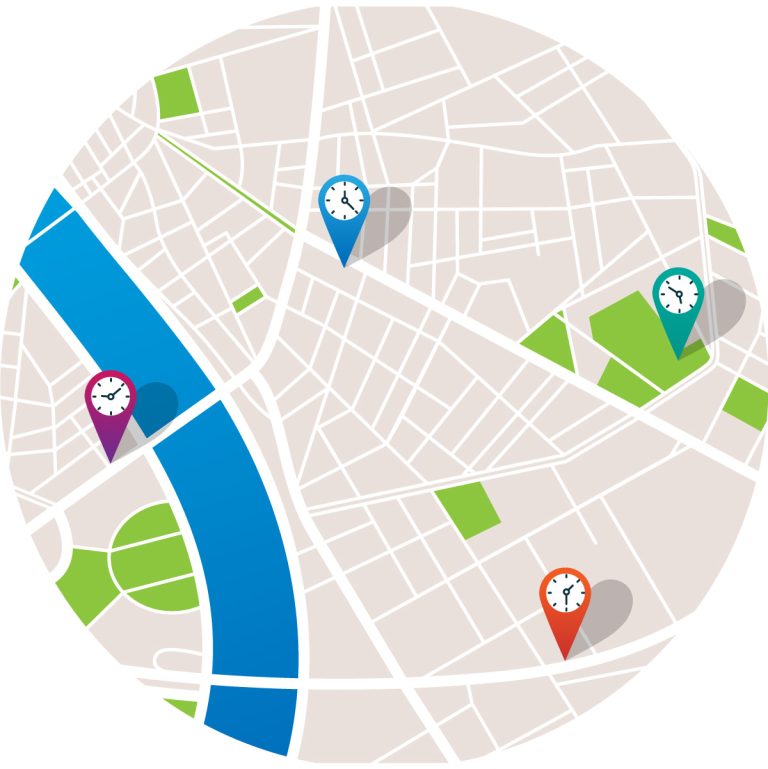When a child, teenager, or adult receives ABA therapy, their services are guided by a treatment plan developed by a BCBA in collaboration with a client and their caregivers. A BCBA gathers information, completes assessments, and creates goals in partnership with clients and their caregivers based on identified skill deficits. These treatment hours are for clinical services which should be treated similar to a prescription.

ABA is highly individualized according to each person’s needs and situation. Assessments will identify specific, unique deficits and growth areas for each person. The amount of time needed to reach those goals differs for everyone and can change over time. For individuals with autism, ABA service hours recommendations are determined based on the level of needs within three main domains: maladaptive behaviors, social communication, and self-care (Aetna, ABA Medical Necessity Guide, 2021). Therefore, the number of hours a BCBA recommends will vary significantly from person to person. Recommended hours can range from 10 to 40 hours per week. Once goals and a timeframe are determined, your BCBA and ABA agency will work to obtain insurance authorization for the direct services hours needed to reach the treatment plan’s goals within a particular time frame.
Along with your BCBA’s coordination and planning, both CASP and the BACB outline two types of individualized treatment, Focused and Comprehensive, which help determine the number of hours needed. Both organizations make the following recommendations for comprehensive treatment, “…intensity levels of 30-40 hours per week are common and necessary to achieve meaningful improvements…” and “Intensity levels in a range of 10-25 hours per week…” for focused treatment.
Furthermore, the BACB, CASP, the Association of Professional Behavior Analysts, and Autism Speaks wrote in their Model Coverage Policy, ”It should be noted that lower-intensity treatment, delays in commencing treatment, and interruptions in treatment may result in patients deteriorating or regressing. That will likely result in increased healthcare costs and greater dependence on more intensive services across the lifespan for those patients.”

I know it’s important, but we can’t dedicate the recommended weekly hours to services.”
ABA is not a small commitment, but you should make every effort to maximize your treatment hours. The benefits of accommodating your BCBA’s recommended treatment hours are undeniable. ABA can affect individual behaviors while also improving aspects of everyday life. Utilizing all of your hours can help your child build upon their daily living skills so they can learn to do things independently.
Anytime, Anywhere
ABA therapy can happen in any setting. That means your child can work on their daily living skills, no matter where they are or who they are with. For example, daily living skills may include basic tasks like toileting, bathing, and eating independently to more sophisticated skills like washing the dishes, doing the laundry, and visiting the grocery store — schedule sessions with your Behavior Technician during these times.

When providers work on building these skills with your child, they can do so as part of your existing daily routines within the key areas identified within the assessment. For example, the Assessment of Functional Living Skills (AFLS), provides a wonderful road map for your ABA team to determine which goals could benefit your child’s naturalistic self-care needs. You can have an ABA session while teaching your child to do laundry or get your grocery shopping done while also teaching them how to be in that setting, pick out items, or pay for groceries. If you can reframe your thinking to remember any time, anywhere, you don’t really have to make time for ABA therapy. ABA can happen without special accommodations and provide you with additional peace of mind because you will have support for your child instead of doing it alone.


ABA therapy can and will also help your child learn to communicate anywhere. Folding ABA into your everyday life will help caregivers learn how to communicate more effectively with their children. Challenging behaviors arise due to a communication breakdown, not because an individual chooses to be challenging. Remember, you can schedule sessions in different everyday settings, like going to the park, the bowling alley, during a playdate, or a haircut. This way, areas of strength and weakness in all verbal and nonverbal communication forms can be identified and addressed.
ABA therapy can and will help your child learn how to engage effectively in social interactions. Humans are social creatures. We socialize because we like to (some of us) but, more importantly, because we need to (all of us). This happens in our homes, on the phone, through the internet, in the grocery store, at school, at the doctor’s office, and at family gatherings, to name a few. Therefore, the value of dedicating time and resources to teaching and learning about the nuances of socialization cannot be overstated. Scheduling treatment hours during these everyday activities is one of the easiest ways to maximize your treatment hours.

Your BCBA will develop ABA strategies that can be used to break down the variables contributing to or leading to challenging behaviors and reduce their frequency, intensity, and duration. Challenging behavior can happen anywhere, and when it does, it can wreak havoc on a family’s life. Many families avoid important self-care or social activities like doctor’s appointments or family gatherings because their child has difficulty in those settings, and it’s easier just to avoid them. However, if you schedule hours during these times, ABA techniques can help identify specific ways to make these activities manageable. Once we understand the variables that can be changed and the skills that can be taught, you’ll be able to get out there with more success on your own. Of course, it takes time and dedication from everyone involved. Still, the impact on your quality of life will be significant, not to mention all of the benefits of experiencing the activities and events you previously avoided.
Use it or lose it
If you don’t use it, you lose it. This adage typically holds true regarding services covered by insurance companies. For example, suppose your insurance provider agrees to the 10 hours per week of ABA recommended by your BCBA, but you only use 5 hours per week. As a result of this low utilization, your child does not gain significant progress over six months. For the next authorization period, they’ll likely only approve 5 hours due to the key factors that would be looked for within a progress report.

You will then be forced to dedicate time and resources to an appeal. In the meantime, the progress and traction your loved one has made could be lost, and time that could have been spent continuing to build skills and achieve treatment plan goals may ultimately be lost. Not to mention take even longer.
When you research the general costs associated with receiving ABA therapy, from Autism Parenting Magazine to recommendations from National Autism and Insurance Coverage State laws, the average hourly rate for ABA Therapy, if paid privately, without insurance, can cost $120 per hour. Using a treatment plan that asks for 20 hours a week, that’s $2,400 per week or $124,800 per year. While many of us are using our health insurance to cover these costs, it’s important to remember that these are benefits you’re paying for and money you’d lose by not utilizing all of the BCBA prescribed hours.

Circumstances can change at the drop of a hat. Your employment or insurance coverage could change unexpectedly. The way insurance plans cover ABA can vary greatly. It’s best to go with the recommended and approved hours when you have them, take advantage of your benefits as best you can, and create a history of treatment.
Remember, the time and effort you spend with your loved one on growth is time very well-spent.
